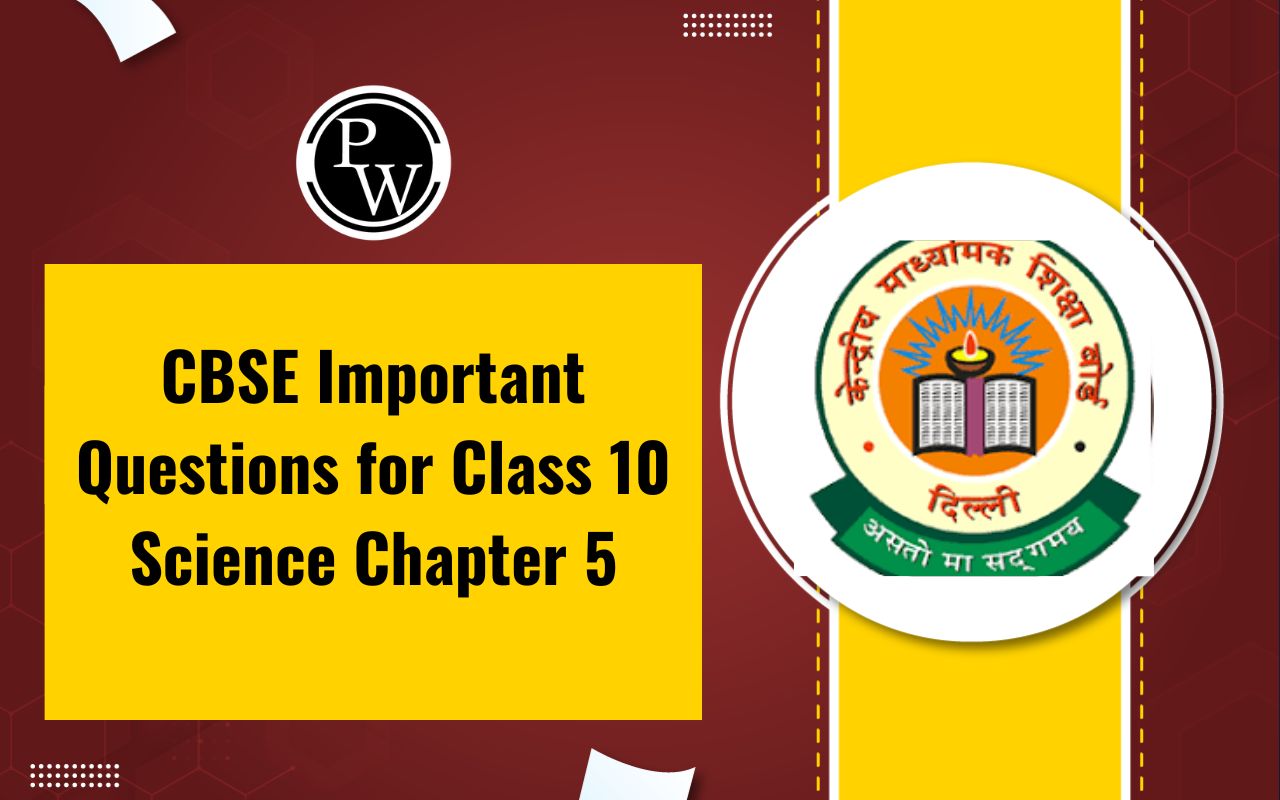
CBSE Important Questions for Class 10 Social Science Geography Chapter 6: Chapter 6 of CBSE Class 10 Social Science Geography, Manufacturing Industries, covers the importance, classification, distribution, and environmental impact of industries in India. Key topics include the role of industries in economic development, agro-based and mineral-based industries, and major industries like iron & steel, cotton textiles, and IT.
It also discusses industrial pollution and sustainable development strategies. Important questions focus on factors influencing industrial location, contributions of industries to GDP, challenges faced, and environmental concerns. Map-based questions on industrial centers are common. Understanding these concepts helps in scoring well and gaining insight into India’s industrial landscape.
CBSE Important Questions for Class 10 Social Science Geography Chapter 6 Overview
Chapter 6 of CBSE Class 10 Social Science Geography, Manufacturing Industries, is crucial for understanding India's industrial development. It highlights the role of industries in economic growth, employment generation, and infrastructure development. Key topics include types of industries (agro-based, mineral-based, chemical, and IT), major industrial regions, and factors influencing industrial location.
The chapter also addresses challenges like pollution and sustainable industrial practices. Important questions focus on industrial contributions to GDP, location factors, government policies, and environmental concerns. Mastering these concepts helps students understand real-world economic dynamics and prepares them for board exams and competitive exams effectively.
CBSE Important Questions for Class 10 Social Science Geography Chapter 6 PDF
Chapter 6 of CBSE Class 10 Social Science Geography, Manufacturing Industries, covers the role of industries in economic growth, types of industries, major industrial regions, and environmental concerns. Understanding these topics is essential for exams and real-world applications. Below, we have provided a PDF containing important questions to help students prepare effectively, covering key concepts, map-based questions, and exam-relevant topics for better understanding and practice.
CBSE Important Questions for Class 10 Social Science Geography Chapter 6 PDF
CBSE Important Questions for Class 10 Social Science Geography Chapter 6 Manufacturing Industries
Section –A (1 Mark)
1. Industrial locations are influenced by the availability of _______.
(A) Market (B) Labour
(C) Raw materials (D) All of the above
Ans. (D) All of the above
2. The first Jute mill was set up in _______.
(A) Hyderabad (B) Bangalore
(C) Kolkata (D) Mumbai
Ans. (C) Kolkata
3. Oil India Ltd is a ________ type of industry on the basis of ownership?
(A) Public sector
(B) Private sector
(C) Joint sector Industry
(D) Cooperative sector Industry
Ans. (C) Joint sector Industry
4. Which of the following group of factors is a prime group for the location of aluminium smelting plant?
(A) Capital and Market
(B) Raw material and Electricity
(C) Labour and Raw material
(D) Capital and Transport
Ans. (B) Raw material and Electricity
5. Which one of the following air services provides services to Oil and Natural Gas Commission in its off-shore operations?
(A) Indian Airlines
(B) Air India
(C) Pawanhans Helicopters LTD
(D) Alliance
Ans. (C) Pawanhans Helicopters LTD
6. Which of the following industries is in the private sector?
(A) Dabur (B) BHEL
(C) SAIL (D) HINDALCO
Ans. (A) Dabur
7. Sixty percent of sugar mills are concentrated in which of the following states?
(A) Punjab and Haryana
(B) Maharashtra and Gujarat
(C) Uttar Pradesh and Bihar
(D) West Bengal and Orissa
Ans. (C) Uttar Pradesh and Bihar
8. Which of the following cities is the electronic capital of India?
(A) Delhi (B) Mumbai
(C) Bangalore (D) Hyderabad
Ans. (C) Bangalore
9. Which of the following is the effect of liberalization and foreign direct investment on the iron and steel industry of India?
(A) Lower productivity of labour
(B) High costs and limited availability of coking coal
(C) Irregular supply of energy
(D) Boost to the industry
Ans. (D) Boost to the industry
10. On the basis of raw materials used, industries are classified as _______.
(A) Public sector and private sector
(B) Basic industries and consumer industries
(C) Agro-based and mineral-based industries
(D) None of the above
Ans. (C) Agro-based and mineral-based industries
Section-B (2 Marks)
11. Define manufacturing.
Ans. Production of goods in large quantities after processing from raw materials to more valuable products is called manufacturing.
12. How does manufacturing help in earning foreign exchange?
Ans. Export of manufactured goods expands trade and commerce and brings in much needed foreign exchange.
13. What are consumer industries?
Ans. Consumer industries are the industries that produce goods for direct use by consumers, e.g., sugar, toothpaste, paper, sewing machines, etc.
14. Why is the ‘least cost’ known as a decision making factor for the ideal location of an industry?
Ans. Least cost is the key factor that determines the location of an industry because industry tends to be located at a place where factors of production are either available or can be arranged at low cost.
15. Why has the ‘National Manufacturing Competitiveness Council’ been set up?
Ans. National Manufacturing Competitiveness Council (NMCC) has been set up with the objective of appropriate policy intervention, by the Government and renewed efforts, by the industry to improve productivity and achieve its target over the next decade.
Section-C (3 Marks)
16. What are the key challenges faced by the sugar industry in India?
Ans. The sugar industry in India faces several significant challenges, including: Seasonality of the Industry: The sugar industry is seasonal in nature, which makes it difficult to secure a consistent and skilled workforce during the peak seasons. Outdated Production Methods: Many sugar mills in India still use old and inefficient production
techniques, leading to lower productivity and higher costs. Transport Delays: There are frequent delays in transporting sugarcane from farms to factories.
This often results in the loss of sugar content in the cane, reducing the overall yield and quality of the sugar produced.
Underutilization of Bagasse: Bagasse, the fibrous byproduct of sugarcane, has significant potential as a source of energy. However, there is a need to optimize its use, particularly for power generation, to address the challenges of power shortages and improve efficiency.
17. “Industrialization and urbanization go hand in hand.” Validate the statement.
Ans. After an industrial activity starts in a town, urbanization follows. Industry provides
employment to the people of the area. Population migrates from rural hinterlands to seek jobs;
Housing and transport facilities are developed to accommodate these people. Other infrastructural developments take place leading to growth and development of the town into a city. Sometimes, industries are located in or near the cities. Cities provide markets and services such as banking, insurance, transport, labour, consultants and financial advice, etc. to the industry. Thus, industrialization and urbanization go hand in hand.
Section –E (4 Marks)
25. Case Study:
Manufacturing industries form the backbone of any economy, playing a pivotal role in driving economic growth, creating employment opportunities, and fostering technological
advancement. These industries encompass a wide range of activities, including the production of goods from raw materials or components through various processes. One of the primary
contributions of manufacturing industries is the creation of tangible goods that satisfy human needs and desires. From consumer goods such as clothing, electronics, and automobiles to industrial products like machinery and equipment, manufacturing industries produce a diverse array of products essential for daily life and economic activity. Manufacturing industries also play a crucial role in job creation, providing employment opportunities across various skill levels. From skilled labor involved in production processes to engineers and managers overseeing operations, manufacturing industries offer a diverse range of career opportunities that contribute to livelihoods and economic development.
(i) What is the primary role of manufacturing industries in an economy?
Ans. Driving economic growth and job creation.
(ii) What types of products do manufacturing industries produce?
Ans. Consumer goods and industrial products.
(iii) How do manufacturing industries contribute to employment?
Ans. By providing diverse job opportunities across skill levels.
(iv) Why are manufacturing industries essential for economic development?
Ans. They form the backbone of the economy, fostering technological advancement and meeting human needs.
Section-D (5 Marks)
21. “Jute industry is concentrated in the Hugli basin”. Validate the statement with three suitable reasons.
Ans. The concentration of jute mills along the Hooghly River, specifically in the Hooghly basin, is due to several strategic and practical factors. Here are three key reasons for this concentration:
1. Availability of Raw Materials:
• Proximity to Jute Growing Areas: The Hooghly basin is close to the major jute- producing areas of West Bengal and neighboring states like Bihar and Assam. This
proximity ensures a steady and abundant supply of raw jute, reducing transportation costs and ensuring the freshness of the jute fibers, which is crucial for producing high-
quality jute products.
2. Transportation and Connectivity:
• River transport and Rail transport: The Hooghly River provides an excellent means of water transport, which was historically crucial for the movement of raw materials and
finished products. Additionally, the region is well-connected by rail and road, facilitating the efficient transport of jute and jute products. This connectivity helps in reducing
costs and time, enhancing the overall efficiency of the jute mills.
• Port Facilities: The presence of the Kolkata port, one of the oldest and most significant ports in India, allows for easy export of jute products to international markets. This access
to global trade routes has been instrumental in the growth and sustainability of the jute industry in this region.
3. Labor Availability and Urban Infrastructure:
• Skilled and Unskilled Labor: The Hooghly basin, being a densely populated region, provides a large pool of both skilled and unskilled labor. The jute industry is labor-
intensive, and the availability of a workforce that has been traditionally involved in this sector is a significant advantage.
• Urban Centers: The presence of Kolkata, a major urban center, offers various ancillary services such as banking, insurance, and marketing, which support the jute industry.
The urban infrastructure, including housing, healthcare, and education, makes it easier to attract and retain a workforce.
22. Classify industries on the basis of ownership.
Ans. On the basis of ownership, industries can be classified as:
(i) Public Sector: These industries are owned and operated by the government agencies.
(ii) Private Sector: These industries are owned and operated by private entrepreneurs, e.g., TISCO, Bajaj Auto Ltd., Reliance Industries, Dabur Industries, etc.
(iii) Joint Sector: These industries are jointly run by the state and individual or a group of individuals. Oil India Ltd. (OIL) is jointly owned by the public and private sectors.
(iv) Cooperative Sector: These industries are owned and operated by the producers or suppliers of raw materials, workers or both. They pool in the resources and share the
profits or losses proportionately such as the sugar industry in Maharashtra, the coir industry in Kerala.
Benefits of Using CBSE Important Questions for Class 10 Social Science Geography Chapter 6
Exam-Oriented Preparation – Helps students focus on key topics that are frequently asked in exams.
Concept Clarity – Strengthens understanding of Manufacturing Industries, its role, types, and challenges.
Efficient Revision – Saves time by providing a structured approach to studying important topics.
Better Answer Writing – Enhances writing skills with well-structured answers based on CBSE patterns.
Map-Based Learning – Improves geographical knowledge of major industrial locations.
Higher Scores – Boosts confidence and performance in board exams through focused practice.
CBSE Important Questions for Class 10 Social Science Geography Chapter 6
What is the name of Chapter 6 in Class 10 Geography?
Why is this chapter important?
What is the foundational challenge?










